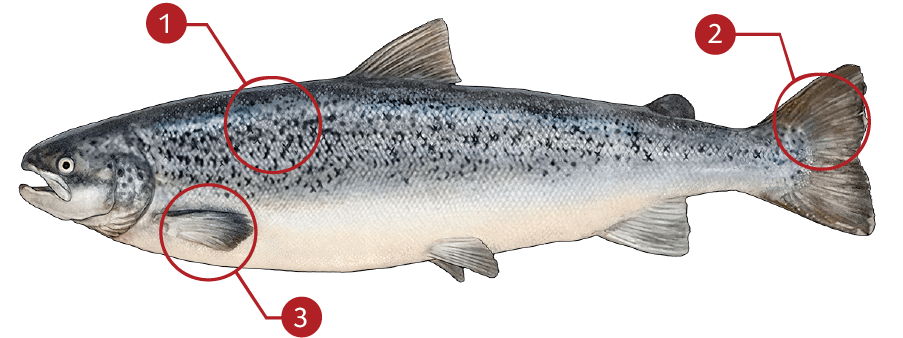ATLANTIC SALMON
How to identify an Atlantic Salmon
It has the body shape of a trout, and it is distinguished from trouts of the genus Oncorhynchus by coloration, size, and location of occurrence, among other things. At sea it is a silvery fish with a sparse scattering of small black spots often shaped like Xs or Ys on the upper half of the body, and sometimes with a few spots on the cheek and gill cover. In inland waters, especially at spawning time, the Atlantic salmon turns a much darker color of bronze or dark brown. This change may be accompanied by the appearance of red spots on the head and body, making this fish look remarkably like a brown trout, its closest relative. Often brown trout may have circles, or halos, around some of its spots and the spotting may be heavier than in the Atlantic salmon, extending onto the lower half of the sides and the fins including the adipose fin. The spots do not normally take the form of Xs or Ys.
Where to catch Atlantic Salmon
The Atlantic salmon is native to the northern Atlantic from the Connecticut River to Quebec, Iceland and southern Greenland. It also occurs from the Arctic Circle to Portugal. Inland, there are a number of landlocked populations that must be considered strictly freshwater fish. Otherwise, the species is anadromous (migrates to the sea and back, and spawns in freshwater).
IDENTIFICATION

| |
Silvery fish with a sparse scattering of small black spots often shaped like Xs or Ys on the upper half of the body |
| |
Black spots predominantly above the lateral line, though the caudal fin is usually unspotted. |
| |
All fins, save the adipose, are bordered with black |
TARGET AREAS
|
|
Acknowledgements: We thank TAKEMEFISHING.org (www.takemefishing.org), Wisconsin Department of Natural Resources, Indiana Department of Natural Resources for their contributions to these FISH FACTS.

